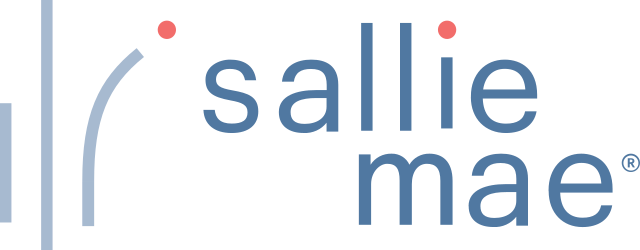This article is proudly sponsored by Sew Torn, a film by Diamantis Zavitsanos!
SLM Corporation (NASDAQ: SLM) Stock Pitch: A High-Margin Countercyclical Winner for a Gradual Fed Pivot
Executive Summary
SLM Corporation, commonly known as Sallie Mae, is the largest private student loan lender in the U.S., commanding approximately 64% market share and accounting for nearly 50% of total originations in 2024. SLM’s business model is built on high net interest margins (NIMs), prime-only borrowers, and low-cost funding via its in-house bank, SLM Bank.
In a slowing economy with rising enrollment and approaching Fed rate cuts, SLM’s margin dynamics are set to strengthen. I see 30–40% upside by 2026, driven by macro tailwinds, margin expansion, and a rebound in student loan demand.
Investment Thesis: Why Buy SLM Now?
1. High-Margin Lending Model
-
~90% of total revenue comes from private student loans.
-
Net interest margin (NIM): ~5.5%, well above industry average of ~4.7%.
-
Key drivers:
-
Prime borrowers only (avg. FICO ≈ 755)
-
Low charge-offs (~2.3% from 2020–2024)
-
High loan yields (~9%) vs. low funding costs (~4.5%) via SLM Bank deposits
-
2. Self-Funded via SLM Bank
-
SLM uses depositor funds (CDs and savings accounts) to finance its student loans.
-
This model allows margin protection even during volatile market conditions.
-
Unlike traditional banks, SLM Bank exists to fund lending, not to generate standalone profits.
3. Rate Cuts Will Expand Margins
-
SLM’s cost of funds (~4.5%) tracks the Fed funds rate closely.
-
Student loan rates (~9%) are only ~40% rate-sensitive, so they decline more slowly than funding costs.
-
As the Fed cuts gradually (expected late 2025–2026), NIM widens, boosting profitability.
4. Countercyclical Demand Tailwind
-
College enrollment typically rises during economic slowdowns:
-
+16% during the 2008 GFC
-
Q1 2025 GDP: -0.3% contraction
-
-
Rising tuition + limited federal aid = growing demand for private student loans.
-
From 2020–2024, private education lending grew at a ~4.7% CAGR.

5. Policy Tailwinds Under Trump Administration
-
As of May 5, 2025, collections on defaulted federal loans have resumed (after a 5-year COVID-era pause).
-
Wage garnishment and collection enforcement improves repayment psychology and reduces headline risk.
-
A stronger culture of loan repayment benefits both federal and private lenders.
Business Segment Breakdown
Private Education Lending (~90% Revenue, ~5.5% NIM)
-
Makes loans to undergraduate, graduate, and professional students.
-
Key revenue drivers:
-
~98% from interest income
-
~2% from minor fees (late fees, etc.)
-
-
Key cost drivers:
-
~60%: Interest paid on deposits
-
~25%: Loan loss provisions
-
~15%: Loan servicing & ops
-
SLM recognizes interest income over the life of the loan using the effective interest method. Charge-offs occur if a loan is delinquent ~120+ days.
SLM Bank (~10% Revenue, ~17% Operating Margin)
-
Provides high-yield deposit vehicles (CDs, savings) to fund loan book.
-
Not a standalone profit center—designed to minimize funding cost.
-
Deposit yield ≈ 4.5% as of April 2025.
-
Main revenue source = internal margin from student loan lending.
-
Excess funds may be parked in short-term instruments (e.g., Treasuries).
Key cost: interest paid on deposits (≈95% of funding base), up 260% from 2020–2024 due to rising Fed rates.
Macroeconomic Setup
Rate-Cut Environment Benefits NIM
-
SLM’s funding costs move nearly 1:1 with the federal funds rate.
-
Student loan yields, by contrast, decline slowly (only ~40% rate sensitivity).
-
A 1% Fed cut = only ~0.4% loan yield compression, widening spread and boosting margin.
Economic Slowdown → More Student Loan Demand
-
Slowdowns = enrollment surges
-
Students borrow more as federal aid lags behind rising tuition
-
Strong borrower profile (avg. FICO 755) means low charge-offs even during downturns
Policy Discipline on Repayment
-
Resumption of federal collections reinstates payment discipline
-
Reduces moral hazard, indirectly boosts SLM’s private loan repayment behavior
Key Financial Metrics (as of April 2025)
| Metric | Value |
|---|---|
| 2024 Net Interest Margin (NIM) | ~5.5% |
| Private Loan Revenue CAGR (2020–24) | ~4.7% |
| Charge-Off Rate | ~2.3% |
| Deposit Yield (SLM Bank) | ~4.5% |
| Loan Yield | ~9% |
| % of Loan Rate Tied to Fed | ~40% |
Management Overview
-
CEO: Jonathan Witter
-
Former Capital One & Morgan Stanley exec
-
Re-focused company on student loans post-2020
-
Emphasized underwriting discipline and cost efficiency
-
-
CFO: Steven McGarry
-
20+ year SLM veteran
-
Oversees deposit strategy and capital markets
-
Focus: margin preservation and capital allocation
-
Key Risks & Mitigants
| Risk | Why It’s Manageable |
|---|---|
| Fed delays rate cuts | Margin still high (~5.5%); strong borrower base protects earnings |
| Spike in defaults | Prime-only strategy keeps charge-offs low (~2.3%) |
| Inflation-driven deposit pressure | Loan yields adjustable; SLM has room to reprice loans if needed |
Current Market Sentiment
-
Analyst Consensus: 7 Buys, 4 Holds, 0 Sells
-
Estimated Upside: ~30–40%
-
Investor Perception: Undervalued, misunderstood spread model in macro context
Bottom Line: A Rate-Cut-Ready Compounder
SLM is not a turnaround story—it’s a high-margin, structurally advantaged lender positioned to benefit from a rare macro trifecta:
-
A gradual Fed rate-cut cycle (widening spreads)
-
Countercyclical demand for education lending
-
Policy tone shift that enforces repayment discipline
With deposit-funded loans, high borrower quality, and superior margins, SLM is a smart, macro-leveraged buy into 2026. The setup favors patient investors who understand the power of spread lending during monetary pivots.
Target Upside: ~30–40% through 2026
DISCLAIMER: This analysis of the aforementioned stock security is in no way to be construed, understood, or seen as formal, professional, or any other form of investment advice. We are simply expressing our opinions regarding a publicly traded entity.
© 2025 MacroHint.com. All rights reserved